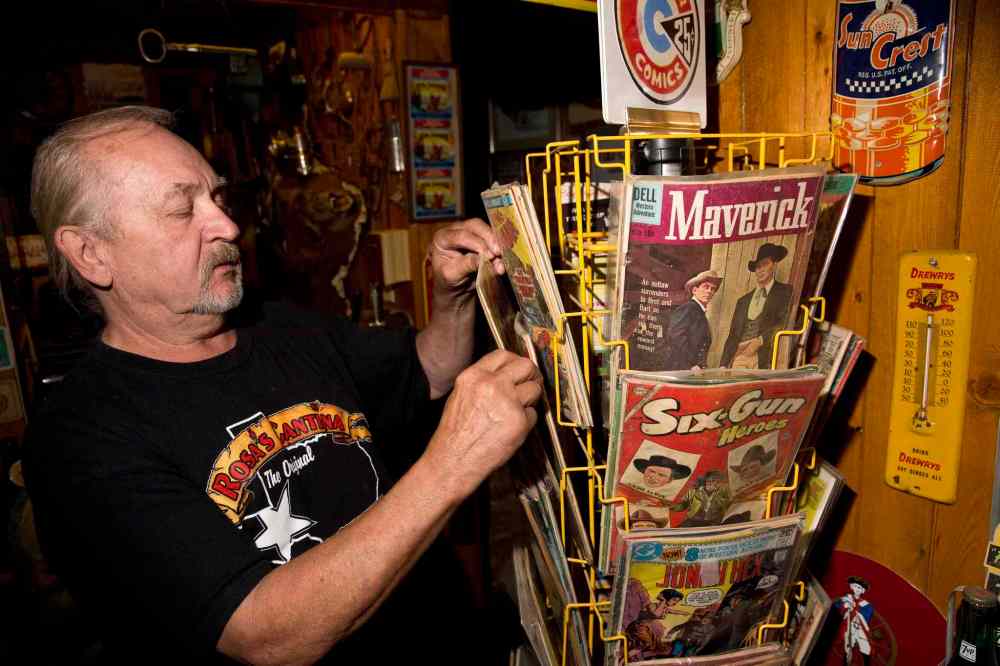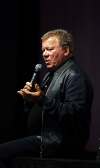A fistful of comics
Western collector has a bonanza of bad hombres and their shooting irons
Advertisement
Read this article for free:
or
Already have an account? Log in here »
To continue reading, please subscribe:
Monthly Digital Subscription
$0 for the first 4 weeks*
- Enjoy unlimited reading on winnipegfreepress.com
- Read the E-Edition, our digital replica newspaper
- Access News Break, our award-winning app
- Play interactive puzzles
*No charge for 4 weeks then price increases to the regular rate of $19.00 plus GST every four weeks. Offer available to new and qualified returning subscribers only. Cancel any time.
Monthly Digital Subscription
$4.75/week*
- Enjoy unlimited reading on winnipegfreepress.com
- Read the E-Edition, our digital replica newspaper
- Access News Break, our award-winning app
- Play interactive puzzles
*Billed as $19 plus GST every four weeks. Cancel any time.
To continue reading, please subscribe:
Add Free Press access to your Brandon Sun subscription for only an additional
$1 for the first 4 weeks*
*Your next subscription payment will increase by $1.00 and you will be charged $16.99 plus GST for four weeks. After four weeks, your payment will increase to $23.99 plus GST every four weeks.
Read unlimited articles for free today:
or
Already have an account? Log in here »
Hey there, time traveller!
This article was published 28/10/2016 (3297 days ago), so information in it may no longer be current.
Central Canada Comic Con takes over the RBC Convention Centre this weekend, which means the downtown meeting space will be inundated with thousands of Winnipeggers dressed up as superheroes.
This may come as a surprise to all those wannabe web-slingers and mock men and women of steel but if Comic Con had been a thing in the 1950s, people in attendance would have been more likely to go as cowpokes than caped crusaders.
Superman ushered in the era of superhero comic books when the first edition of Action Comics hit newsstands in 1938. By the end of the Second World War, however, comic-book buffs were in the mood for a different type of protagonist, according to the 2008 anthology A Complete History of American Comic Books.

In the late 1940s, western-themed movies starring the likes of John Wayne and Gary Cooper were all the rage at the box office. To cash in on the Wild West craze, publishers began releasing comic books based on the exploits of gunfighters such as Two-Gun Kid, Rawhide Kid, Kid Colt Outlaw, Billy the Kid (notice a trend, here?) and Cisco Kid. The so-called “golden age” of western comics lasted until the mid-1960s, author Shirrell Rhoades wrote, with just a few titles surviving into the 1970s and ‘80s. (In 2014, filmmaker Quentin Tarantino announced he was creating a new western comic book based on his 2012 flick Django Unchained, while speaking at the International Comic-Con in San Diego.
“I grew up in the ‘50s and watching those old westerns definitely sparked my interest in western comics,” says Edmund Jag, 68.
“We lived in the North End and every Saturday afternoon, I’d head to the Palace Theatre on Selkirk (Avenue). There was always a western serial before the main attraction and just when it looked like the good guy was going to get shot or run over by a train, the screen would flash ‘to be continued next week.’”
On his way home, Jag would make a couple of pit stops. First he’d pop into Oretzki’s — a Selkirk Avenue department store — to peruse the toy gun-and-holster sets. Then he’d head to Salter Drugs — it was located at the corner of Salter Street and Redwood Avenue, he recalls — to pick up a few western comics with whatever allowance he had left. After tuning into a radio program with his parents after supper, he’d crawl into bed, where he’d proceed to flip through his latest purchases, flashlight in-hand.
Fast-forward 60 years: Jag, a retired salesman, reserves a wing in his rec room for his old comic books, as well as for an array of western collectibles that seemingly includes everything from A to Zorro. In the mood for an old-fashioned shoot-’em-up? Jag can throw on a VHS version of 1951’s Vengeance Valley, starring Burt Lancaster. If you want to hear some tunes, cue up a vinyl copy of Fess Parker’s The Ballad of Davy Crockett. Famished? Jag has a Wild Bill Hickok lunchbox. Thirsty? There’s a Ponderosa tin coffee mug.
“To me, this is art,” he says, plucking the strings of a toy guitar bearing the images of Roy Rogers and his trusty steed, Trigger. “I’d rather have sheriff badges or plastic figures or cap guns on the wall than a painting, that’s for sure.”
Hold your horses; did Jag say “cap guns?”

“If you want to give one a try, they all still work perfectly,” he says, reaching for a toy weapon “signed” by Wild Bill Hickok. Jag fires off a few rounds before holding the metal barrel up to a scribe’s nostrils.
“That nice sulphur smell always reminds me of being a kid, running up and down College or Aberdeen (avenues), chasing the designated bad guys till our parents called us in for the night,” he says, mentioning he and his neighbourhood chums used to fight over who got to be the Lone Ranger or Wyatt Earp, the same way kids playing street hockey nowadays declare themselves Connor McDavid or Sidney Crosby.
“I don’t buy these things for their value,” he says, leafing through an Annie Oakley comic. “I’m 68 and the old memory cells don’t always jive the way they once did, but this stuff brings me back, for sure.”

“Back issues (of western comics) have been solid sellers for me for over 45 years,” says Doug Sulipa, owner of Doug Sulipa’s Comic World, when reached at his warehouse near Steinbach. “There are basically no western comics that do not sell. There are perhaps 100 times as many superhero comics as compared to western comics, thus many fans collect the entire western comic genre.”
One thing Sulipa notices about western comic aficionados — a trait that, in his mind, sets them apart from their superhero-collecting counterparts — is they’re not averse to using their treasures for their intended purpose.
“Superhero fans often battle to get the highest graded copies, as they often make good investments. On the other hand, western comic collectors generally love reading them (and) in most cases prefer low-graded copies,” he says, pointing out western comics’ monetary come nowhere close to superhero comics.

Sulipa says the most valuable western comic according to the Overstreet Comic Book Price Guide is Gene Autry No. 1, rated at $7,500. Compare that to Amazing Fantasy No. 15, which includes the first-ever appearance of Spider-Man, a copy of which sold for US$1.1 million in 2011.
Things don’t get much better when it comes to movie crossovers, Sulipa says. After waiting for decades, western comic-book fans were sorely disappointed when a flick featuring DC Comics’ Jonah Hex, who made his debut in All-Star Western No. 10 in 1972, was released in 2010.
“It was one of the biggest movie disappointments of all time,” Sulipa says, referring to Jonah Hex, which starred Josh Brolin and Megan Fox and grossed $10 million and boasts a paltry 12 per cent approval rating on review site Rotten Tomatoes.
“It needed to be done in Clint-Eastwood-man-with-no-name-spaghetti-western-style by somebody like Robert Rodriguez, to do it justice.”
david.sanderson@freepress.mb.ca
Dave Sanderson was born in Regina but please, don’t hold that against him.
Our newsroom depends on a growing audience of readers to power our journalism. If you are not a paid reader, please consider becoming a subscriber.
Our newsroom depends on its audience of readers to power our journalism. Thank you for your support.




